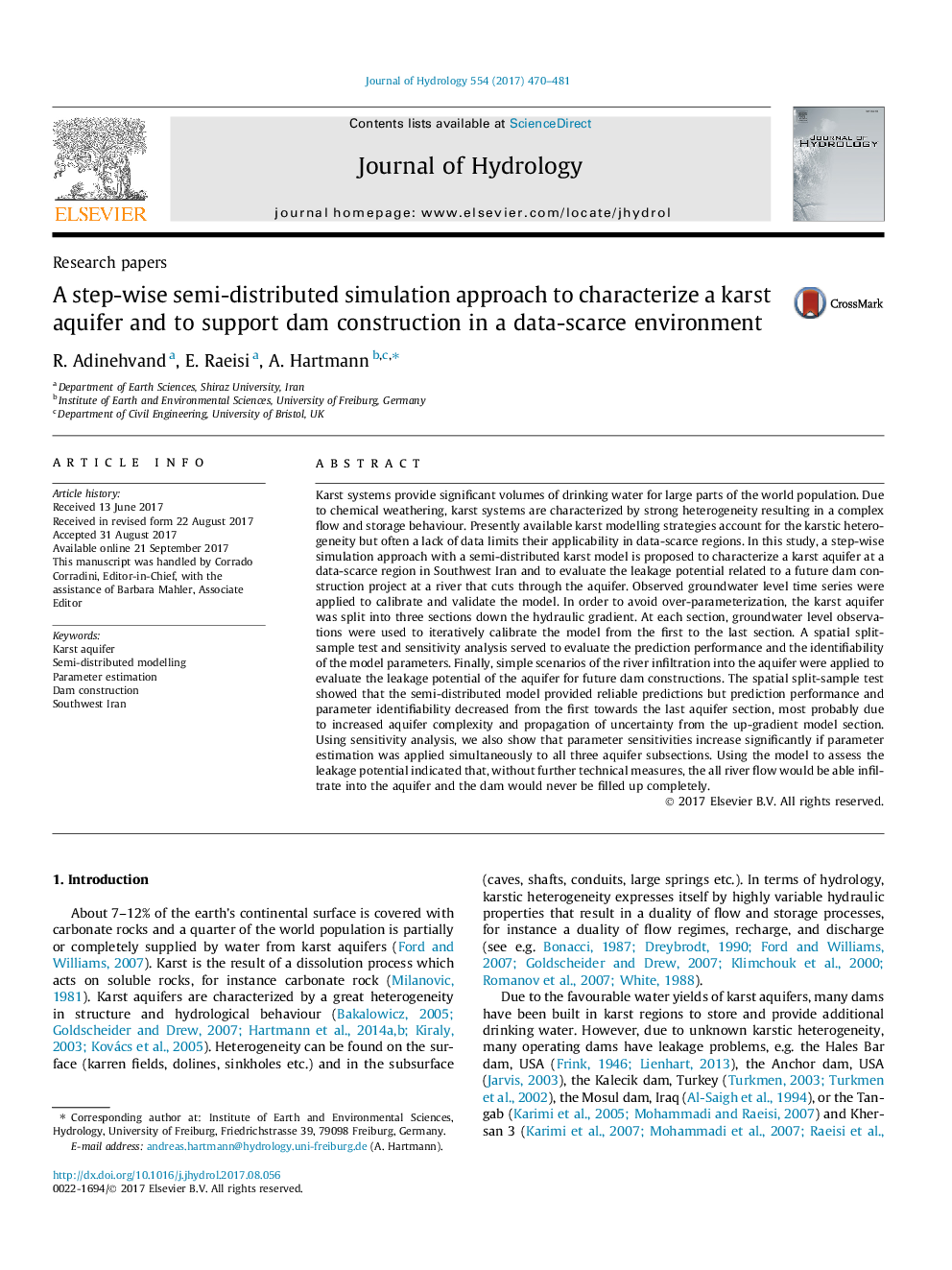| Article ID | Journal | Published Year | Pages | File Type |
|---|---|---|---|---|
| 5771112 | Journal of Hydrology | 2017 | 12 Pages |
â¢A new calibration strategy for semi-distributed hydrological models is proposed.â¢Parameter sensitivities were reduced by considering individual aquifer sections.â¢Estimates of the leakage potential of the dam could be produced.â¢The new approach can be a valuable pre-analysis tool at data scarce regions.
Karst systems provide significant volumes of drinking water for large parts of the world population. Due to chemical weathering, karst systems are characterized by strong heterogeneity resulting in a complex flow and storage behaviour. Presently available karst modelling strategies account for the karstic heterogeneity but often a lack of data limits their applicability in data-scarce regions. In this study, a step-wise simulation approach with a semi-distributed karst model is proposed to characterize a karst aquifer at a data-scarce region in Southwest Iran and to evaluate the leakage potential related to a future dam construction project at a river that cuts through the aquifer. Observed groundwater level time series were applied to calibrate and validate the model. In order to avoid over-parameterization, the karst aquifer was split into three sections down the hydraulic gradient. At each section, groundwater level observations were used to iteratively calibrate the model from the first to the last section. A spatial split-sample test and sensitivity analysis served to evaluate the prediction performance and the identifiability of the model parameters. Finally, simple scenarios of the river infiltration into the aquifer were applied to evaluate the leakage potential of the aquifer for future dam constructions. The spatial split-sample test showed that the semi-distributed model provided reliable predictions but prediction performance and parameter identifiability decreased from the first towards the last aquifer section, most probably due to increased aquifer complexity and propagation of uncertainty from the up-gradient model section. Using sensitivity analysis, we also show that parameter sensitivities increase significantly if parameter estimation was applied simultaneously to all three aquifer subsections. Using the model to assess the leakage potential indicated that, without further technical measures, the all river flow would be able infiltrate into the aquifer and the dam would never be filled up completely.
